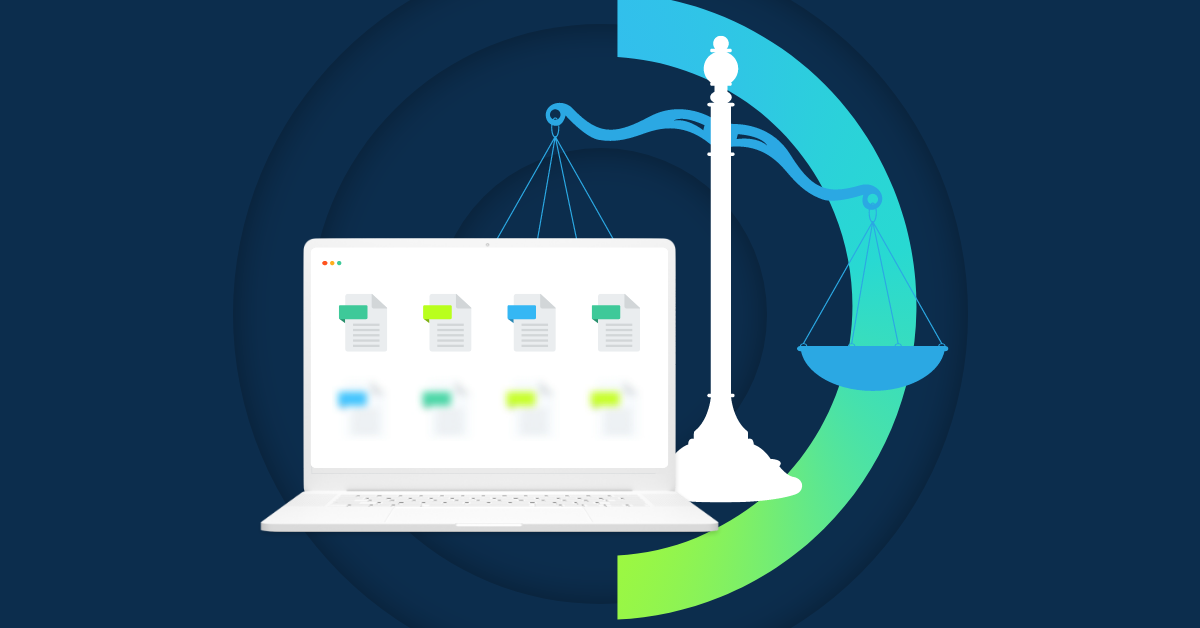
(Note: CrashPlan does not provide legal advice. While the information on this site refers to legal issues, it is not intended as legal advice or as a substitute for the particularized advice of your own counsel.)
Data is the core of all business. It generates insights to drive operations, strategy, and growth. It is the connecting force between you and your customer base. And in many cases, it carries sensitive information that your business has been entrusted with. Protecting that data is paramount, and the legal hold process is one way to do so. This article will explain how technology can support you during potential legal holds and eDiscovery processes.
What Is a Legal Hold?
When litigation is reasonably anticipated, a legal hold instructs businesses to preserve all forms of relevant data. Legal holds can cover a broad spectrum of data ranging from emails and documents to databases and physical files.
Neither small businesses nor large corporations are immune from the legal hold process. Between 2000 and 2020, 99% of Fortune 500 companies made payments to plaintiffs for discrimination or harassment.
What Is eDiscovery?
The term eDiscovery (or electronic discovery) is the process by which electronic data is sought, located, secured, and searched, with the intent of using it as evidence in a civil or criminal legal case. eDiscovery can be carried out offline on a specific computer or it can occur across an entire network.
How Are Legal Holds Related to eDiscovery?
Legal holds and eDiscovery are deeply interconnected. Legal holds require a company to preserve potentially important data so it may be examined during the eDiscovery process. This prevents the loss or destruction of potential evidence. If you unlawfully destroy such evidence, you can face severe legal consequences, so legal holds are crucial to ensure compliance.
Legal Holds: How Tech Can Help
The thought of a legal hold may chill the hearts of business owners and managers everywhere, but you can take steps to protect yourself. Backup services like endpoint backup have built-in technologies to make legal hold compliance and the eDiscovery process as painless as possible.
Control the Scope
Automatic backup technologies can be set up to incorporate as much or as little data as you want. Legal holds can involve many types of data, including email, chat, and instant messages. In some instances, file metadata can also be relevant.
Follow the Data
Backup services offer detailed control over roles and permissions. Chain-of-custody validation is frequently relevant during eDiscovery. Your team can track what changes were made, by whom, and when.
Remain Invisible
A legal hold doesn’t impact user experience within endpoint backup systems like CrashPlan. Endpoint backup solutions make it seamless for a user to remain in compliance with legal holds. From the user’s perspective, there’s no difference between a standard backup and a legal hold backup.
Have a Policy
A comprehensive backup plan is the best tool for complying with legal holds. Backup services should allow you to specify exactly which files need to be preserved. If a file is deleted later, the endpoint backup service will maintain a copy of it.
Seek Legal Advice
A legal hold can be complicated, and you don’t want to overlook any data. An attorney specializing in this area can guide you in how you can best comply with the legal hold.
CrashPlan: Backup for Legal Holds and eDiscovery
CrashPlan is an advanced endpoint backup service designed for modern businesses. It offers functionalities that help manage legal holds and the eDiscovery process.
Unlike Cloud Collaboration Platforms (CCPs), CrashPlan provides true backup for all past and present data, making it easy to recover files from any point in time. This is particularly valuable during a legal hold, where data from various timelines may need to be accessed. Furthermore, CrashPlan has the most up-to-date security standards. It encrypts all data during transmission and storage, ensuring the integrity of sensitive data.
CrashPlan can make preparing for a legal hold significantly easier. You can rest assured knowing CrashPlan securely backs up your data so it is ready for eDiscovery when a legal hold is activated. Get a Free Trial today
Frequently Asked Questions
What are the essential steps to implement a legally defensible legal hold process?
Start by identifying all potential data sources – emails, documents, databases, and physical files. Set up automated backup systems to continuously capture these sources. Make sure your backup solution includes metadata preservation and version control. And don’t forget chat logs and instant messages – they’re often overlooked but legally required. Regular testing of your preservation system helps catch any gaps before they become problems.
How can we integrate legal hold procedures with our existing backup systems while maintaining a chain of custody?
Your backup system needs specific configurations for legal holds. Set retention policies that prevent deletion of preserved data. Use role-based access controls to limit who can modify settings. Track every interaction with held data through detailed logs. However, be cautious when mixing regular backups with legal holds, as this requires separate storage locations and careful labeling to prevent confusion.
What are the most common pitfalls when managing eDiscovery across multiple data sources, and how can we avoid them?
Data silos cause the biggest headaches during eDiscovery. Different departments often store similar info in separate systems, making collection messy. Create a data map that shows where everything is located. Set up consistent naming conventions across all platforms. And remember, deleting data accidentally under a legal hold can’t be undone. Double-check your retention settings regularly.
How do we determine the appropriate scope and duration for legal holds while minimizing business impact?
Review each data source’s relevance to potential litigation. Only preserve what’s truly needed – over-preservation wastes storage and complicates searches. Consider using date ranges and keyword filters to narrow scope. Keep holds active until you get a written release from legal teams. Update the scope as case details change. Regular reviews help trim unnecessary data.
What encryption and security measures should be implemented to protect sensitive data during the legal hold process?
Use end-to-end encryption for data both in transit and at rest. Apply multi-factor authentication for anyone accessing held data—store encryption keys separately from the data they protect. Run regular security audits on your preservation systems. Remember that backup locations require the same security level as primary storage, if not higher.




